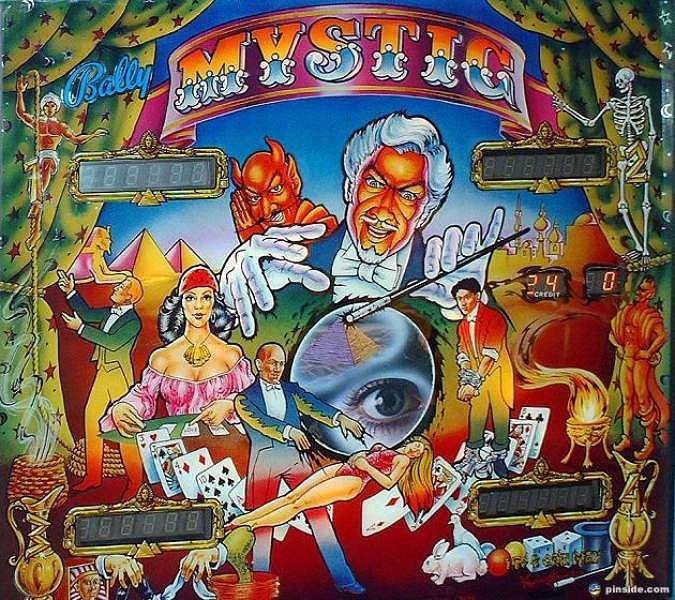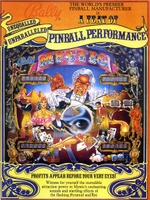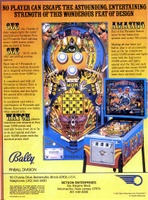

Mystic
Unlike other Bally electronic pinball games, their documentation for this game shows the model number only as 1192, not 1192-E. Artist Margaret Hudson posed for the large eye on the backglass. A small number of Early Production games had cabinet art using a base yellow color. This color was soon changed from yellow to blue. Early Production games also had a decorative eye in the center backglass that is recessed into the backbox and, when lit, creates a 3-D effect. In later games, this eye was silkscreened onto the glass with the rest of the art. A change was made during production to increase the size of the long plastic next to the messenger ball lane to provide a hood over the standup target so the messenger ball, if hit hard by the ball in play, would not jump out of the lane after hitting the target. We provide an image of the two styles of plastic, placed side by side. At the 2004 Texas Pinball Festival, O'Connor stated he got the idea for the artwork for this game, delivered to him as a blank whitewood, because he was interested in and dabbling with magic at the time.









































